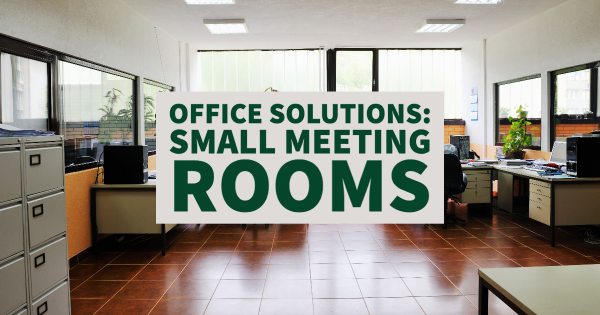Offices are typically operating with a limited amount of space. Whether an office is being built from scratch or created through the renovation of an older building, there is only so much you can do within that space. Many office solutions focus on utilizing space as efficiently as possible for this reason. Not only does the space need to be utilized efficiently, however; it also needs to be utilized effectively, allowing people to work in a way that won’t inhibit their productivity levels. It’s important for you to consider unique office solutions in Delaware, rather than relying on the same structures.
Perhaps one of the best ways to conserve space in an office setting is to downsize your meeting rooms. Smaller meeting rooms may not be ideal in every circumstance, but they can certainly be an option in most offices. Here are some of their benefits.
1. Simplicity
It’s much easier to set up meeting rooms when they are smaller. This goes both in terms of preparing them in general, with computers and projector screens, and preparing them directly for meetings. IT teams can outfit smaller meeting rooms more quickly than they do large ones. Plug and play wireless presentations are a breeze in smaller meeting rooms.
2. Cost Efficiency
The less work and technology that goes into preparing a meeting room, the more cost-efficient that meeting room is. Startups, in particular, can benefit from smaller meeting rooms, as they won’t need to spend as much money on them outright. They’re still getting what they need while being a bit more budget-conscious.
3. Remote Convenience
We are living in an age wherein more people work remotely than ever before, with remote work saving American Express between $10 million and $15 million. It’s much more convenient for remote employees to connect in small meeting rooms. They are offered privacy, and can often have more of a personal connection with those working in these smaller spaces.
4. Collaboration
People work better together when they’re in smaller meeting rooms. They have less space in their seating arrangements and can share plans in a way that they wouldn’t be able to in larger rooms. Smaller rooms promote a more collaborative office environment.
While smaller meeting rooms may not have been exactly what you envision when initially planning your office, they could be exactly the solution you need.

